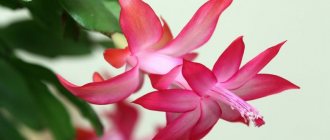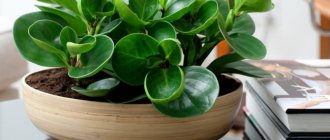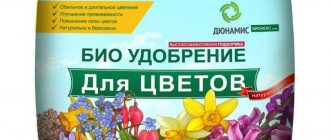External features
In terms of appearance, peperomia comes in several different varieties, ranging from compact and almost dainty to something bolder with thick, colorful leaves. Leaves can come in different colors, shapes and textures.
Even the growth habit can vary, from small compact and rounded varieties to taller upright ones, right up to a number of climbing peperomia. Check out the photo of peperomia and you will fall in love with this plant, and this exquisite indoor flower will delight you with its unusual beauty for many years.
All this variety means that the number of different varieties of peperomia you can buy is huge and incredibly varied, so much so that if you put them side by side you might think you're actually looking at completely different plants!
Types of peperomia
Even in our latitudes, dozens of species of peperomia are grown in indoor floriculture. It is impossible to go through them all at once, but they can be divided into three large groups!
Bush peperomia
Compact bushy plant up to 20 cm in height with soft, bright leaves. They form a lush crown, under which the thick stems are almost invisible. Occasionally taller varieties are found. The most popular subspecies of bushy peperomia are marbled, reddish, spotted, silver and wrinkled. From these names it is easy to understand how leaves of one type or another differ.
Photo: krrot.net
Erect peperomia
It differs from the bushy form because the stems are straight, fleshy and of different lengths. This type of peperomia seems more chaotic and grows on average up to 35 cm, but there are tall and completely dwarf species. Popular representatives are magnolia-leaved, clusifolia, velvety, chisel-shaped and blunt-leaved.
Photo: medium.com
Ampelous peperomia
These are trailing vines that are especially good in hanging planters. They are also densely covered with large beautiful leaves. In addition, they can cling to supports or various surfaces, because in nature they often grow as epiphytes. Subspecies of ampelous peperomia are round-leaved, heady, whorled, creeping, creeping and others.
Photo: growlithops.com
Hamedorea (50 photos): types, cultivation and care at home
Light
For the most part, indoor peperomia flowers are slow-growing plants that will adapt within reason to the level of light you end up providing. Too much light scorches and washes out the leaves, and too little light will ultimately result in ragged, thin, and unkempt growth.
Peperomias are also one of the few houseplants that tolerate fluorescent light well, so they can be successfully grown permanently in windowless rooms (as long as the indoor light is on most of the day!).
Watering
When studying the question of how to water a flower, be careful, since in this regard it is quite easy to overdo it and create conditions for rotting. You should watch the watering and then wait for the soil to dry out a bit before watering again.
Do not keep the soil constantly wet or allow it to become saturated. At the same time, peperomias are not desert cacti, so be sure to check the situation regularly and provide water when needed. In winter the plant will need very little unless it is particularly warm and bright.
Humidity
Some representatives of this species require fairly high levels of humidity to maintain their original appearance. However, most indoor peperomia plants thrive without any artificial increase in environmental humidity.
Fine leaves can be difficult to clean, so feel free to mist them when they are warm to keep dust away.
Temperature
Peperomias strongly dislike cold and drafts, so it may be difficult for them to keep looking nice in winter if you choose a cool location. Make your life easier by placing them in frequently used living areas and away from unheated rooms.
Ideally, at least 15°C and for good growth during the growing season, try to place them in an area where the temperature during the day is 21°C or higher.
Diseases and pests
The following problems may arise during cultivation:
- Leaves droop and fall off - insufficient watering. In winter, the reason may be non-compliance with the temperature regime.
- Leaf petioles turn black - excess moisture.
- Blistering occurs on the leaves due to excessive watering.
- Brown tips on peperomia leaves are due to exposure to draft or cold.
- Leaves become limp in winter due to excess moisture, in summer due to excess light.
- Leaves droop with sufficient watering - root rotting due to overwatering.
The most common pests are scale insects, thrips, mealybugs, and spider mites.
Transfer
Peperomia roots do not grow very quickly, so it usually takes several years to fill the pot and grow out of it. The roots are also quite fragile and delicate, so they can be easily damaged by regular replanting.
You don't need to repot more often than every two to three years, and when you do, just use standard potting compost or a houseplant mix.
Reproduction
If you want to propagate, cuttings from peperomia plants are usually planted from spring to late summer. If you have a tall erect or hanging peperomia, take stem cuttings. It is simply a piece of stem with a leaf or two attached.
The stem then goes into cutting compost, which you keep moist and warm. After about a month, if all goes well, roots will form and new leaves should appear.
If instead you have a bushy peperomia, then taking stem cuttings is not practical as they are very soft and will simply rot. So, you take leaf cuttings and propagate them just like violets.
Reproduction methods
Bush peperomia are propagated by leaves, while erect and hanging peperomia are propagated by stem cuttings.
Leaf propagation:
- pluck the leaf along with the petiole;
- bury up to half the plate in wet sand;
- cover with a transparent cap.
Rooting will continue for several weeks and is considered complete when a young leaf appears from the sand.
To propagate by cuttings, you just need to cut a branch and place it in water. Roots will appear on it very quickly. After this, the branch can be planted in a small pot with light peat soil.
Growth rate
All types of peperomia are slow-growing houseplants and will take many years to outgrow the location you choose for your plant.
Height and span
There are many different types of peperomia that have different growth patterns, for example some are bushy and others are trailing, however it is unusual for a typical peperomia to grow taller than 25cm or wider than 20cm.
As mentioned, this is a houseplant that takes time to grow to its maximum height and spread, so don't expect this to happen quickly, even if the conditions you provide are ideal.
Popular types and varieties
The shape, size and color of the leaves of indoor peperomia vary in variety.
Among the popular varieties are the following:
- Peperomia obtufolia. A common variety with elongated, up to 10-12 cm, corrugated foliage. Color dark green; Less common are varieties with cream leaves.
- Wrinkled. Compact plant. The leaves are convex, with a clear longitudinal relief; dark green on the outside and red on the inside. The exotic look is complemented by tall creamy spikelet flowers.
- Peperomia magnoliafolia is one of the first varieties to appear in the country. Over the years, she has managed to move into the category of “grandmother’s” flowers. The plant reaches 30 cm in height; leaves are round and dense. The surface is glossy, light green. The inflorescences are inconspicuous, blending in with the foliage.
- Peperomia whorled is a hanging plant with small elongated diamond-shaped leaves. The surface is glossy, green; petioles are short.
- Peperomia roundifolia is a common species with thin hanging shoots. The leaves are small, round; painted light green.
- Lilian (caperata) is a highly decorative compact variety with wrinkled round leaves of dark green color. The inflorescences end in flattened ridges, making the flowering plant look unusual and elegant.
- Silvery - has rounded leaves with pointed ends on long cuttings; dark green, with longitudinal silver stripes.
- Peperomia clusifolia. The shoot is erect, up to 50 cm. The leaves are elongated, variegated. When there is sufficient light, green and purple colors appear on the plate
- Pereskifolia is an erect species with diamond-shaped green leaves, collected in whorls of several pieces.
- Golovata is a hanging plant with wide oval green leaves, densely sitting on thin long shoots.
- Peperomia creeping is an ampelous variety with small ovate-pointed leaves with a cream edging.
- Rosso is a compact (up to 25 cm) semi-shrub species with corrugated leaves. Their outer surface is painted dark green; inner burgundy.
- Peperomia ampelous is distinguished by long, up to 1.5 m, shoots. There are varieties with plain and variegated leaves.
- Watermelon is an original plant with heart-shaped silver-green leaves decorated with longitudinal dark green stripes. The bush is compact.
- Peperomia ferreira is more like a succulent - bright green, long (up to 8 cm) thick leaves with pointed ends sit so tightly that it seems as if there is no trunk. The bush is compact, no higher than 30 cm, fluffy.
- Happy Bean is one of the varieties bred on the basis of the previous species, the leaves of which resemble young pea pods.
- Graveolens is another succulent variety of peperomia. Its boat-folded leaves are bright green above and burgundy below. The trunk is erect, the bush is compact.
- Chisel-shaped (dolabriformis) is similar to the previous species, but its leaves are more “folded” and have the same color on both sides. The highlight of the plant is the special arrangement of leaves on the trunk, thanks to which a neat star-shaped rosette is formed.
These are not all types of peperomia. There are many more of them, and many of them are similar. Therefore, in flower shops you can often find different representatives of Peppers under the name “peperomia mix” - such plants were grown from seeds and the exact name of the variety and variety is unknown.
Flowers
Peperomia are low-maintenance houseplants, and if you provide them with basic care, they will bloom quite often for you. This will depend on your type, but they most often bloom in summer and fall.
The flowers are not scented or particularly colorful, instead the flower is described as "fancy" buds with stems that grow vertically a couple of centimeters above the foliage below.
The pink stems tend to have a slight bend, and this, together with the tiny flowers that emerge, gives an appearance reminiscent of a rat's or gerbil's tail. This is indeed very unusual, but at least the appearance of these strange flowers will be proof that you are treating your peperomia well!
How to care for peperomia: summary
- Loves good lighting levels
- Provide a bright place without direct sunlight
- Watering from low to moderate. Since they are prone to rotting due to overwatering, it is best to water them lightly. Watering once a week or less will likely be sufficient for your plant.
- Moderate room temperature. These plants love warmth, so temperatures above 21°C during the day are best.
- Low level of feeding. Feed two to three times a year.
Care
Watering
Watering in the spring-summer period is carried out quite often, as soon as 2-3 cm of the soil substrate has dried. The water should be slightly above room temperature, soft and well purified.
In autumn and winter, watering is reduced and watered only when the entire lump of earth has dried out. The water from the pan must be drained to avoid the occurrence of fungal diseases and mold.
Heavy moisture can lead to rotting and death of the entire plant. Therefore, it is necessary to water carefully and in a timely manner.
Lighting
For Peperomia it is very important to choose a suitable place:
- It should be well lit, but the plant should not be placed in direct sunlight. This will cause burns on the leaves and the succulent will lose its natural appeal.
- The plant should also not be placed in shaded areas without additional artificial lighting. The plant will stretch out, the leaves will become smaller and faded than they should be. This is especially true for variegated forms of Peperomia.
Temperature
This amazing plant practically does not need a winter dormancy period. Peperomia tolerates cold periods well at temperatures not lower than 16 degrees. But even at room temperature the plant feels quite comfortable. In the summer, you can expose Peperomia to fresh air, but not to direct sunlight and avoid harmful drafts. Even a small draft will cause the plant to fall leaves and become diseased. The best place is a closed balcony or a place on the terrace in a place protected from the wind.
Also read: Monilaria - bunny ears
Humidity
The fleshy succulent leaves of Peperomia accumulate water well, so there is no point in artificially humidifying the air. However, the plant loves spraying. On hot summer days, you can arrange a small shower, which, in addition to moisturizing, also has hygienic functions: it frees the leaves from dust, since it is difficult to clean the leaves with a sponge. Shower with warm, soft water. Be sure to let the plant dry in the room before taking it out into the fresh air.
The soil
You can use traditional store-bought soil for cacti. You can make your own soil mixture. To do this you need to take in equal parts:
- Garden humus, steamed in the oven;
- leaf soil;
- peat, can be bought at a flower shop;
- coarse river sand, well washed in running water.
Mix all components until smooth, add fine-grained expanded clay, crushed coal and a little zeolite.
Pay special attention to drainage, since Peperomia has a small root system, it is necessary that the drainage occupies 1/3 of the flat pot. Drainage can be made from large expanded clay or broken red brick.
Transfer
The plant is replanted every three years. Peperomia grows quite slowly (meaning succulent species) and there is no need for frequent replanting. Most often, partial replanting is used - change the pot to a wider one, add soil mixture and replace 2-3 cm of old soil on top with fresh mixture.
Succulent species of this plant are perfect for growing in florariums, as they grow slowly and retain their decorative appearance for a long time.
Read the article - master class on growing succulents in florariums
Fertilizer
Fertilize throughout the active growing season. It is enough to buy complex fertilizer for succulents and cacti in the store and apply it according to the instructions along with watering. Fertilizers should be diluted in warm water. And don't overdo it, as strong concentrations can burn the delicate roots of succulent species. With the correct concentration and time of feeding, the colors of the plant become brighter.
Also read: Stone rose - Rejuvenating. We grow in the house and garden
Possible problems with the peperomia plant
Leaves have brown tips and edges
This is usually caused by a sudden drop in temperature or exposure to drafts. Remove damaged leaves if they are very unsightly, and remember to keep your peperomia plant away from cold areas.
Leaves fall from the plant
As with most houseplants, some leaf shedding is normal, but if a lot of leaves are coming off the stems in a short period of time, you have a problem.
In most cases, this is caused by the plant being placed in a place that is too cold or due to watering. The cause of the cold should be easily eliminated.
The leaves have withered, there is rot
As mentioned in the previous issue, leaf wilting may be the first sign of underwatering in Peperomia, but if rot is present, it is usually a sign of overwatering combined with cool temperatures.
All you can do is remove any rotting leaves (they should fall off easily with a little pull anyway) and carefully continue watering in the future. If the damage is very severe, see if you can salvage healthy areas for breeding.
Wavy leaves on a plant
Again, this is typical of overwatering, but over a long period. Reduce the amount of watering you provide and allow the soil to dry out over a longer period. Blisters can also be caused by too much sunlight. In any case, if the damage is significant and spoils the appearance of the plant, remove the affected leaves.
Dull blurry pale leaves
This is most likely caused by too much light over a long period - move to a darker area. If you don't feel like this is the problem, it could also be a sign of underfeeding.
Features of growing at home. Briefly
Caring for the plant is not difficult. Peperomia at home is unpretentious and requires standard procedures and conditions:
| Temperature | Sudden changes are undesirable. In summer, the optimal temperature is 22-24C, 16-18C, at lower temperatures it is recommended to reduce watering. |
| Air humidity | Air humidity is not important for the plant, but the higher it is, the better. Daily spraying is required. |
| Lighting | Variegated species prefer bright, diffused light, while others need partial shade. Direct sunlight has a negative effect on the plant. |
| Watering | Moderate, as the topsoil dries out. In summer, at least 3 times a month, in winter - every 2.5-3 weeks. Soft water at room temperature is suitable for humidification. |
| Priming | The soil must be pH neutral and well drained. |
| Feeding and fertilizer | From late spring to early autumn it needs specialized liquid fertilizer. |
| Transfer | Replanting peperomia is required every spring, but you should not increase the size of the pot too much. |
| Reproduction | Reproduction occurs by stem, leaf cuttings, or seeds. |
| Features of cultivation | The peculiarities of cultivation include the plant’s love of heat and humidity. The ideal place would be a kitchen where there are no cold drafts. |
How to buy peperomia correctly
When choosing a plant to buy, you need to pay special attention to its appearance. The leaves should be juicy, elastic, bright, without powdery coating and brown scales. A plant with drooping, limp leaves in moist soil may indicate problems with the root system.
You should not buy such a flower, it can quickly die.
Bloom
Decorative deciduous succulent blooms in early spring and summer. The inflorescences are not particularly beautiful, but have unusual, bizarre shapes that attract the eye.
In some species they look like a golf club, in others they look like the tails of mice, in others they look like a comb with many teeth. The flowers included in the inflorescences are small in size and calm in color.
Temperature
Homemade peperomia is a heat-loving and shade-loving plant; it is not for nothing that in nature it grows in the lower tier of the tropical forest. It must be protected from sudden temperature changes, drafts and hypothermia. Optimal indicators are 16-24C.
In summer, it is not recommended to take the flower outside; dry air and temperatures above 25ºC are destructive.
Hygiene
The juicy, glossy leaves of the flower quickly become covered with dust. To prevent small debris from spoiling the appearance of the plant, it must be periodically cleaned with a damp cloth or rinsed in the shower.
Spraying
The optimal humidity level for a flower is 40-60%. A lack of humidity does not threaten the plant with anything serious, but it is better not to experiment and during dry periods increase the air humidity by periodic spraying. You can place a pot of indoor peperomia in pebbles and pour water into it to evaporate.
Lighting
Comfortable conditions for green-leaved forms of peperomia are diffused light, partial shade.
In the summer, they will feel good on the windowsills of eastern, northern and western windows. In winter, the plant needs more light, and southern windows are suitable for growing. For variegated species, brighter diffused light is needed, but from direct sunlight the pattern on the sheets will become discolored. Therefore, such varieties are grown on the south side, but placed in the light shade of other plants.
To ensure the vital activity of peperomia at home in winter, add additional lighting. It is necessary to extend daylight hours to 16 hours with the help of additional artificial lighting.
Watering
Loves moisture, but is extremely sensitive to waterlogging of the soil.
Watering too frequently can cause root rot and flower death. Therefore, it is better to dry it out than to flood it. You can determine the need for watering by looking at the soil if it has dried to a depth of 3 cm. In the warm season, the soil dries out faster than in winter. Water to moisten the soil should be several degrees warmer than the air in the room.
Pot
Before planting, you should evaluate the size of the peperomia root system. The larger it is, the larger the pot should be. You also need to take into account that it is recommended to add up to 3 cm of drainage layer to the bottom of the pot before planting.
Preference should be given to deep, tall ceramic containers.
Each subsequent replanting is done so that the roots in the pot are distributed evenly and are not located close to the soil surface.
Priming
The choice of substrate for planting peperomia should be taken seriously. Neutral or slightly acidic soil with a pH level of 5 to 6.5 is preferred. Most commercially prepared soils have a high level of acidity and are not suitable. Therefore, 250-350 g of ash or dolomite flour is added to purchased soil for every 10 liters of substrate.
You can prepare suitable soil yourself. To do this, it is recommended to mix sand, humus and peat in proportions 1:1:1 and add 2-3 parts of leaf soil.
Before planting the plant in the soil, it must be treated against pests with a weak manganese solution. At the bottom of the pot, be sure to lay out drainage, at least 2-3 cm.
Feeding and fertilizer
The peperomia flower in indoor conditions requires constant fertilization. In the spring-summer period, fertilizing is carried out at least once every 2 weeks. Specialized complex organic and mineral products for decorative foliage plants are suitable.
The main thing is not to exceed the proportions and dosages specified in the instructions for the drug.
Peperomia transplant
Young plants under 3 years of age need annual replanting. Older flowers can last up to 3 years without changing soil and pot.
Some varieties can withstand no replanting for up to 7 years. The main criterion for the need to increase capacity is the appearance of the plant and the volume of the root system, which can grow into drainage holes or above the soil surface.
Trimming
To give the flower a more branched appearance, pinching the tops above 3-5 leaves or trimming the stem when it reaches a length of 18-20 cm will help. Cuttings and leaves can be rooted in water.
Is it possible to leave without care during the holidays?
When going on a trip, you need to take care of the flower in advance so that you don’t have to urgently resuscitate it later. To ensure that the plant feels good in the absence of proper care, place a layer of wet expanded clay on the soil, and place a tray with wet peat under the pot. It is better to temporarily remove peperomia from the window to the floor.
Growing peperomia from seeds
Before planting, flower seeds do not need long soaking. To speed up germination, they are carefully cleaned of wax deposits on one side and placed in warm water for 40-50 minutes. At this time, the soil is prepared. Place drainage on the bottom of the pot, then a layer of soil with sphagnum. The seeds are placed in the substrate to a depth of 2-3 cm.
The container is left for a week in conditions of sufficient, diffuse lighting. After 7-10 days, the first shoots appear, which should be moistened regularly. Picking can be planned for 30 days after germination. The next plant transplant will be needed no earlier than in a year.
For planting seeds, choose a container 8-9 cm in diameter.











